Osteochondrosis is the most common cause of back pain.Damage to intervertebral discs underlying the development of the disease can be found in every second person who has reached 40 years and at the age of 50, 70% of the population is already incredible.At the same time, osteochondrosis today is more and more among young people and even adolescents.Intervertebral, radicolite hernia, brain supply disorders - all these complications of osteochondrosis which threaten handicap and often leading to disability.

Currently, effective treatment methods that not only eliminate symptoms, but helping to restore the destroyed areas of the vertebrae, in traditional medicine, there is almost not.Consequently, it is so important to understand what factors lead to the destruction of the discs, which must be modified in their lifestyle in order to stop the development of osteochondrosis.And what measures should be taken to deal with existing changes and launch the recovery processes in the spine.
What is osteochondrosis?How does the disease progress?
Osteochondrosis is a disease in which destruction processes in the spinal-motor segment are beginning to prevail over the recovery processes, which manifests itself by pain in the back, a limitation of mobility, etc.During the development of this disease, other complications may form.
The intervertebral disc (hereinafter referred to as "disc") is a ring of elastic fabric, whose fibers are woven in an aforementioned and underlying vertebra.Due to its special structure, the intervertebral disc protects each vertebra from destruction and also ensures the mobility of the whole spine (folds, torsion).
In the center of the intervertebral disc is a luscious nucleus, which looks like a rubber pillow filled with liquid.In an adult, it consists of 70% of water, as well as carbohydrates which can bind and give water.At the time of the load on the corresponding segment of the spine, the nucleus gives water and flats, and after the end of the effect, takes the previous form.Such a pillow absorbing shocks allows the spine to climb and extinguish up to 80% of the shock load which comes to the spine.
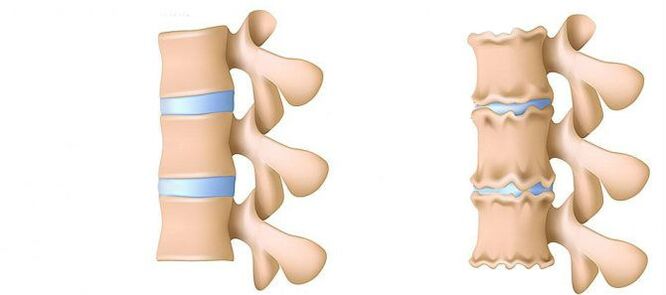
Degenerative-dystrophic processes most often start with deterioration of the function absorbing the shocks of the intervertebral disc.
- Deterioration of blood supply to the intervertebral disc.In adults, the food of the intervertebral discs is carried out by the diffusion: the blood is only delivered to the vertebrae, and already through them, it "infiltrates" in the discs.In the best way, the disc is powered during dynamic loads (for example, walking), because the principle of the pump (outlet of the transformed fluid when compressed, the flow of nutrients and oxygen when removing the load).Thus, the nutrition of intervertebral discs is difficult in particular under the conditions of a sedentary lifestyle (hypodynamia).
- Changes in the pulp disc kernel.With a deterioration in blood supply, water supply, sugars and amino acids with a pulpose nucleus is disrupted.For this reason, the production of carbohydrates connecting water.The nucleus is dehydrated, its gel -shaped structure turns into a fibrous, the ability to spring and extinguish the shots gets worse.This increases the load on the fibrous ring and the vertebrae, they are more likely to be blocked and injured.
- Changes in the fibrous ring of the intervertebral disc.Due to the flattening of the pulpose nucleus, the increased load is on the fibrous disc ring.In conditions of poor blood diet, the fibrous ring loses its strength.The instability of the spine occurs, which can lead to the formation of an intervertebral hernia, a displacement of the vertebrae and damage to the spinal cord or the nerve roots.
- Disc protrusion.The formation of an intervertebral hernia.While the fibers of the fibrous ring weaken, the Pulpian nucleus begins to come out, for example, to the intervertebral channel (protrusion of the disc).Such an amazing can still lead to a break in a fibrous ring and the formation of a hernia.Find out more about the training process of an intervertebral hernia in a separate article - "effective treatment of intervertebral hernia at home".
- Spondylosis - destruction of intervertebral joints (spondylartrosis), osteophytes growth and ligament ossification.In addition to the formation of an intervertebral hernia in osteochondrosis, damage to intervertebral joints, destructive changes in the vertebra (cartilage) and ligaments are observed.
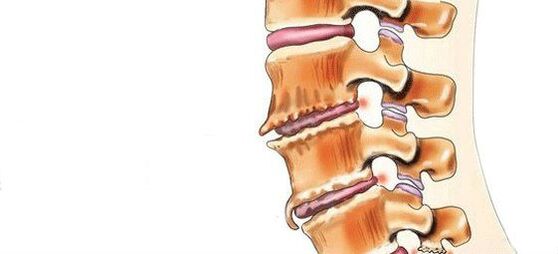
Since the function absorbing the shock of the intervertebral disc is not carried out, the vertebrae and the small intervertebral joints begin to be constantly injured.
The instability of the spine is also the cause of damage to the cartilage of the bodies of the vertebrae and the joint processes.As a result, bone tissue grows, osteophytes appear(Greek: osteo - bone, phyto - plant)- Bone growth.The appearance of osteophytes is commonly called the formation of tips or the deposit of salts.
- Osteophytes can constantly irritate the ligaments of the vertebral segment, which gradually leads to their ossification and the limitation of movements in the affected spine.
- Osteophytes can also hurt the nearby soft tissues, the result of which is the accumulation of dead cells, to which the body reacts with inflammation (edema).
- Osteophytes on the surfaces of the vertebrae facing the intervertebral discs damage the fibers of the fibrous ring, accelerating the formation of a hernia.The osteophyte, which develops towards the intervertebral channel, improves the compression of the spinal cord, blood vessels, nerve roots.
- Osteophytes growth can cause the neighboring vertebrae to package and complete mobility loss in the vertebral segment.
Symptoms and signs
Symptoms and signs of osteochondrosis - back pain!Initially, back pain can occur due to the overforce of the back muscles which try to centrify the vertebrae excessively in motion (stage 3), so that the muscles protect the spinal cord located in the spine.The spinal cord is the central part of the nervous system, so the body tries to prevent its damage (compression, irritation).Thereafter, the cause of pain can already be the vertebrae of the vertebrae, the hernial protrusion even with a small size.At the time of the appearance of a hernia, a person, as a rule, feels intense pain (this is called the cervix or lumbar).
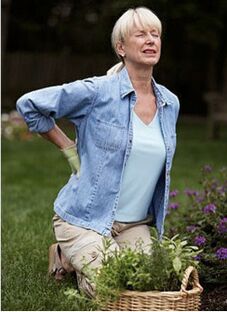
Due to pain in the back, a person involuntarily seeks to take a position in which the intensity of the pain decreases - the forced poses and if called.At the same time, the spine is in a non -violent position which reduces the discharge capacities of the discs.This increases the risk of their additional damage.
As violations progress in the joints, the development of ossification of vertebral bodies, joint surfaces and ligaments, the patient's spine begins to lose mobility.Partial, then carry out restrictions on the movements in the affected spine.
Complications of osteochondrosis of the spine
There are several stages of development for complications of osteochondrosis in the spine.Their manifestations depend on the department in which the destructive process occurs.
- Disgogenic radiculitis (radiculopathy), in which the hernial projection tightens the nerve root (a bunch of nerve fibers, extending from the spinal cord and subsequently divided into nerves going into one or the other area of the body).The pain is due to both the mechanical effect of hernia on the spine and the addition of inflammation (edema).
- Vascular brown syndrome, in which the ships are pressed which feed the roots of the spinal cord.It manifests itself by movements altered in the hands (with cervical osteochondosis) or lower limbs (with lumbosacral), as well as a loss of sensitivity.With this complication, the work of internal organs may suffer, to which the affected nerves go (urlation, sexual function, intestinal work, etc.) can develop, hypertension can develop and a deterioration of memory occurs.Sometimes, a vascular counterfeiting occurs suddenly, with a net movement in the affected area of the spine - more often, in the lower back.There is acute pain and sudden weakening of the muscles on the affected side - syndrome "Paralytic ishias".
- Blood supply violation with spinal cordcaused by the compression of the vessels that feed the spinal cord.The extreme degree of complications is a vertebral ischemic stroke.The result of this complication is an alteration of movements in the limbs (paresis, paralysis), loss of sensitivity, deterioration of the work of the internal organs to complete the refusal.In some cases, this can lead to the patient's death, for example, when the renal function is seriously suffering.
The symptoms of disgusting radiculitis depend on the spine:
| Location | Symptoms and signs |
|---|---|
| Cervical radiculitis, cervical-thoracic | Depending on the level of damage, pain and altered sensitivity in the neck, shoulder, forearm, the fingers occur.Muscle weakness in these departments can also be observed. Often joins the neuralgia of the occipital nerves, in which intense pain at the back of the head is noted.A arrhythmia can occur. |
| Lumbar radiculitis | It manifests itself by pain in the lower back, which is often combined with pain during the sciatic nerve - Ishias, Ishiradiculitis.The weakness of the foot muscles also develops, a violation of sensitivity in the thigh, the lower legs and the feet can occur. |
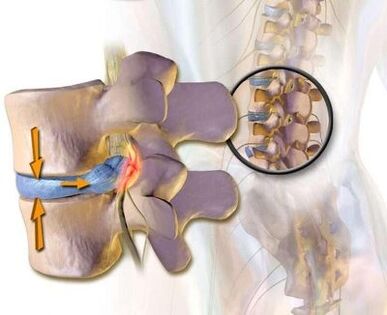
The displacement of vertebral bodies or intervertebral discs with subsequent compression of blood vessels and nerve roots may require urgent surgical intervention.
The reasons for the development of osteochondrosis of the spine
Osteochondrosis is called multifactorial disease-that is, there can be many reasons for its occurrence.Here, we will distinguish two key factors which will gradually lead to the defeat of the intervertebral discs and the subsequent changes of the spine:
- Deterioration of the supply conditions of the intervertebral discs, as well as the cleaning of their fabrics.
- Excessive load on the spine, which leads to the accumulation of dead cells in the vertebral segment tissues.
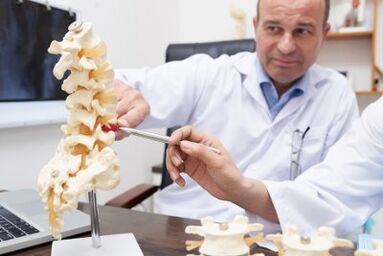
The update of the tissues of the intervertebral discs depends on the sufficiency of the blood flow and the lymphatic flow directly to the intervertebral discs, the blood or the lymphatic vessels are appropriate (which are used in the body to clean the tissues).Food and cleaning the disc are performed indirectly, that is, slowly.This is the reason why in this area does not only occur quicklyDifficult in nutrients and oxygen faminebut so quicklyDamaged cells and dead cells accumulateas well as developed substances.The cleaning of the tissues from "slag" is necessary, otherwise there will be no room for the occurrence of new functional cells, then the fabric will gradually lose its function (for example, the core of the pulpose of the disc will stop coming out, amortization and will be slowly flattened).
The update of the tissues of the intervertebral discs depends on the sufficiency of the blood flow and the lymphatic flow.The speed and strength of these processes are influenced by muscle microvibration created (mainly) back muscles during physical stress.In this regard, one of the reasons for food impairment and cleaning is hypodynamia when the back muscles are relaxed or in a static position.
As osteochondrosis develops, blood supply, lymph and venous flow in the spine can deteriorate due tomuscle spasm.The body gives a signal to the muscles to keep the vertebrae in a certain position compared to each other in the affected area.For a long time, the country's muscles of the country serve the vessels for a long time, which still exacerbates the situation.
It is obvious for most people that the spine can suffer in the case of a strong unusual lifting of weights or in the event of injury, however, damage to the spine may be daily and not so tangible in the event of violation of the neuromuscular depreciation system.Constant microtraumas under low lymphatic conditions lead to the accumulation of dead cells, prevents the growth of functional cells and lead the ossification of tissues more.
Violation of neuromuscular depreciation as one of the main causes of osteochondrosis
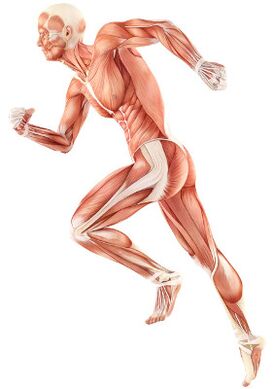
Violation of neuromuscular depreciation as one of the main causes of osteochondrosis in order to reduce the load on the spine during walking, lifting weights, etc.The body has an entire neuromuscular depreciation system.It is ensured by the functioning of the nervous system of the body and the skeletal muscles which interact in agreement to ensure smooth movements and extinguish shock loads on the bones, the joints and, of course, the spine.Thus, most shock charges should turn off the foot.In addition, leg and back muscles are involved in depreciation.If this does not happen (for example, uncomfortable themed shoes do not allow the foot to operate), intervertebral discs are subject to shocks for which they are not intended.The factors that lead to discord in the neuromuscular damping system are listed below:
- Posture violation- Various types of curvature of the spine that prevents it from "spring", the use of non -physiological furniture when working in the office, etc.
- Violation of the approach, execution techniques (correctly during the race, transfer the weight of the toe to the heel);
- Wearing high -heeled or heels shoes, which negatively affects the damping capacities of the foot.
- Excessive charges(playing sports, exhausting physical work), traumatic joints and a spine
- Obesity- excess weight moves the center of gravity of the body, as well as the adipose tissue complicates blood supply to the muscles, the conduct of nerve pulses;
- Driving in sitting seated without depreciation (in standing position, you can spring with your feet);
- Disorders of the function of the nervous system, for example, due to the frequent use of pain relievers which negatively affect nervous conductivity.
- Kidney disturbanceDue to excessive formation in the body of disintegration products.This can be associated with insufficient physical activity - a prerequisite for the work of the lymphatic system, which is responsible for cleaning the tissues of metabolic products and dead cells, as well asliver diseases, chronic foci of inflammationetc.
Hypodynamics
One of the reasons for generalized osteochondosis in recent decades is an epidemic of a sedentary lifestyle.The back muscles and the press in ordinary life are not sufficiently involved and weaken quickly, and strong muscles are necessary for the health of the spine which are not overloaded with static tension, but are occupied by dynamic work.The back muscles are the faster weakened with hypodynamia, which is responsible for the following consequences:
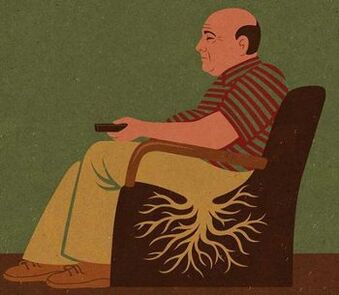
- Insufficient support for the spine in the imprudent movements, which leads to overloading the intervertebral discs, the displacement of the vertebrae and the occurrence of intervertebral hernias.
- The deterioration of the blood supply to the spine: the dynamic work of the skeletal muscles is a prerequisite for blood circulation towards any organ, including the spine.Due to insufficient functioning of the back muscles, destructive changes in the intervertebral discs are progressing - cells die from a deficiency in nutrients and oxygen.And dead cells accumulate, interfering with catering.
- Damage of lymphatic flow and venous outputs, which leads to the accumulation of dead cells in the tissues.The work of skeletal muscles is particularly important for the work of the lymphatic system, because most of its vessels (for example, lymphocapillary) do not have muscle walls and the "push" of the lymph in the blood vessels depends on the work of the skeletal muscles.
4 principles of effective treatment
In order not only to eliminate symptoms, but to deal with the cause of the development of osteochondrosis, spondylosis, radiculitis and ishias, the following tasks must be resolved:
- Create opportunities to clean the tissues from dead cells.This is a necessary condition for recovery in order to hinder additional osteophyte training and to release the tissue regeneration space.To do this, restore / strengthen the lymphatic flow and the venous flow of affected segments;
- Improve blood supply to the affected area;
- Improve the tone of all muscles supporting the spine.This will allow:
- Create stimulation conditionsownBlood flow and lymphatic flow in the spine;
- Restore the functioning of the neuromuscular damping system, which is necessary for adequate support for the spine, in order to avoid new damage.
- Eliminate the pain, as it will give an opportunity:
- Eliminate muscle pliers that block blood flow towards the spine;
- Avoid forced poses.
(Medicinal) drug therapy
Today, in the treatment of osteochondrosis and its complications, drugs from the following groups are used:
- Nepéppetaire anti-inflammatory drugs (NSAIDs)- in the form of tablets or drug injections.These funds have the capacity to reduce pain, reduce the activity of inflammation.However, the effect of their use does not last long - from several hours to two to three days.Therefore, these funds must be taken for a long time - weeks, and sometimes months.At the same time, these drugs negatively affect the mucous membranes of the gastrointestinal tract.Their long -term reception is heavy with the development of gastritis, ulcerative lesions.In addition, they can negatively affect the work of the kidneys, the liver and contribute to the development of hypertension.And, at the same time, these funds do not contribute to cleaning the discs of dead cells.Therefore, their use is just a way to relieve symptoms for a while, but not to eliminate the main problem.
- Anti-inflammatory ctepoid (gopmonal).As a rule, they are used for severe and impenetrable pain accompanying hernias, radiculites, ishias, etc.Gopmons have the capacity to eliminate manifestations from inflammation (due to the oppression of the immune system), relieves pain.But they also negatively affect the mucous membranes of the stomach and the intestines, promote the leachate of the calcium of the bones, inhibit the production of their own vican gopmons.And do not contribute to cleaning the attention of dead cells.
- Daddy- The drugs that affect muscles or nerves that go to muscles and cause the relaxation of skeletal muscles.These means help relieve muscle pliers for a while, reduce pain and improve blood flow.But at the same time, they do not help clean the tissues of dead cells.Therefore, they do not help heal osteochondrosis.
- Epidvision blockade- The introduction of pain relievers and gopmonal agents in space between the solid cerebral shell and the periosteum covering the vertebrae.It is used, as a rule, for intense pain - in the acute period of intervertebral hernia, with severe radicult, Ishias.Depending on the composition, such an injection helps relieve pain for several hours to several days.After the expiration date, the manifestations of the disease are returned, because the procedure does not help to restore metabolic processes in the discs.In addition, when carried out, there is a risk of injury to blood vessels and nerves.
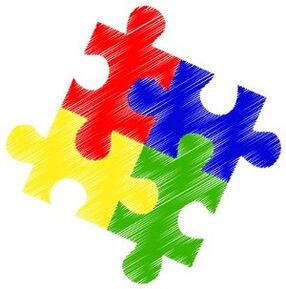
As osteochondrosis and the development of complications are progressingYou should use more and more often drugs, increase doses.This leads to high financial costs, as well as a new deterioration in health due to the side effects of drugs.
Pharmacotherapy, as a rule, is supplemented by the immobilization of a friend of the spine by using orthopedic corsets of variable degrees of stiffness.
























